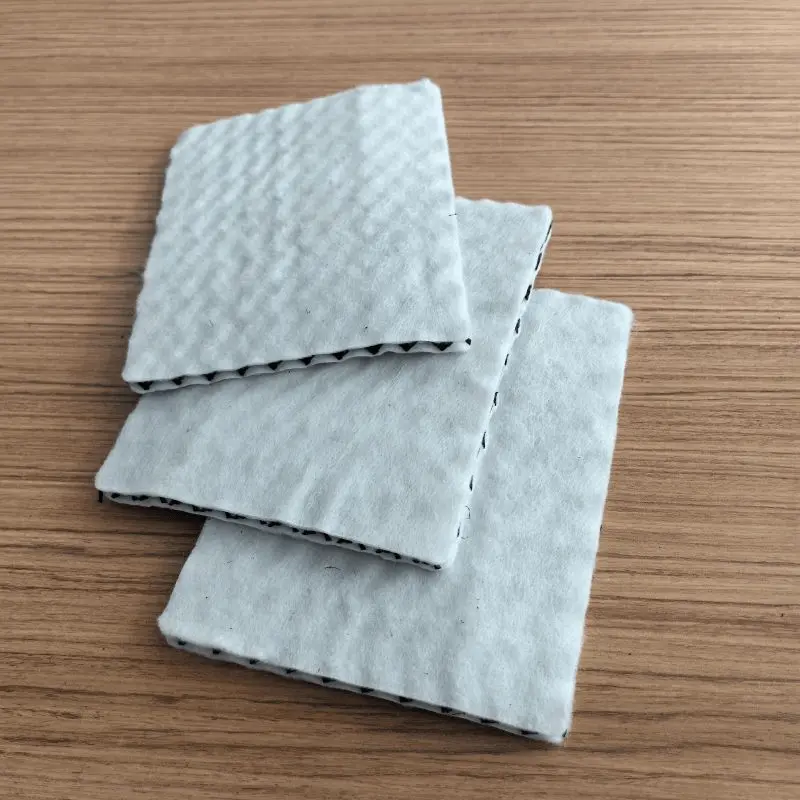The harm of municipal solid waste landfills and the important role of 3D composite drainage net
The hazards of municipal solid waste landfills mainly include the following aspects:
1. Water pollution: The leachate from landfills contains a large amount of toxic and harmful substances as well as various pathogenic bacteria, which can leak through the liners of landfills, thereby exacerbating the leaching of leachate and causing groundwater pollution.
2. Soil pollution: The leachate from landfills can gradually infiltrate into the nearby soil, causing serious pollution to the soil. At the same time, the malodorous gases emitted from landfills can also contaminate the soil and affect plant growth.
3. Health risks to humans: The gases emitted from landfills contain carcinogenic and teratogenic organic volatile gases, and their foul odor can easily cause discomfort. These gases are odorous and contain toxic and harmful substances, which can make nearby residents feel nauseous, headache, and other uncomfortable reactions, affecting their health.
4. Risk of explosion accidents and fires: The landfill gas released consists of a large amount of methane and carbon dioxide, which can easily cause explosions when the concentration of methane in the air reaches a certain level. Meanwhile, the garbage may also catch fire after a long period of accumulation.
5. Accelerated global warming: Methane and carbon dioxide are the main greenhouse gases, which produce a greenhouse effect and cause global warming. The methane content in landfill gas is relatively high, accounting for 40% to 60% of the total volume of landfill gas, so the methane emissions from landfills have a significant impact on global warming.
6. Plant asphyxiation: Although methane from landfills does not directly affect vascular plants, it can reduce oxygen levels in the rhizosphere by displacement of oxygen or by consumption of oxygen by methanotrophic bacteria, leading to oxygen deficiency and plant root death.
In summary, the hazards of municipal solid waste landfills are very serious, and we should try to reduce the generation of waste and adopt sustainable methods for waste disposal. For the existing waste, we should adopt reasonable disposal methods, such as classified recycling and resource utilization, to reduce harm to the environment. At the same time, we should also strengthen the supervision and management of the design, construction, and operation of landfills to ensure that they meet environmental protection requirements and avoid harming the environment and human health.The 3D composite drainage net plays an important role in the landfill. It can improve the drainage efficiency, prevent soil erosion, provide isolation and reinforcement, extend the life of the landfill, and be environmentally sustainable. Therefore, the three-dimensional composite drainage net is one of the important means to achieve stability, environmental protection, and sustainable development of the landfill.
The 3D composite drainage net has important applications in the landfill. Its main functions include the following aspects:
Improving drainage efficiency: The 3D composite drainage net has high drainage performance and can timely discharge surface seepage water to ensure the stability of the slope of the sealed landfill. This drainage network structure automatically shortens the drainage path of the foundation, greatly reduces the drainage time, and extends the service life of the road.
Preventing soil erosion: The three-dimensional composite drainage network can timely discharge seepage water and gas, ensure slope stability, effectively prevent vegetation cover sliding due to over-pore water stress caused by water accumulation, and reduce the risk of soil erosion.
Isolation and reinforcement: The 3D composite drainage net is composed of a 3D geotextile core and two sides bonded with geotextiles. It can play an isolation and reinforcement role in the landfill. At the same time, it has a filtering function for the landfill, preventing small particles from clogging the core and allowing the core to quickly discharge seepage water.
Extending the life of the landfill: The three-dimensional composite drainage net can play multiple roles in the landfill, such as underground water drainage layer, leak detection layer, leachate collection and drainage layer, gas collection and drainage layer, and surface water collection and drainage layer, thereby extending the life of the landfill.
Environmentally sustainable: The three-dimensional composite drainage net is an environmentally sustainable geosynthetic material widely used in municipal gardens, artificial lakes, and landfill engineering. Its raw material is high-density polyethylene. Through a special machine head extrusion rib to form a 3D spatial structure with a drainage channel, it has high longitudinal and transverse tensile strength and compressive strength. This material can help reduce freeze-thaw heave in northern climates, potentially limit ice crystal growth, and extend the service life of roads.
Municipal solid waste landfills are a necessary part of waste management, but their environmental impact must be carefully managed. The implementation of 3D composite drainage nets represents a significant step forward in minimizing the harm associated with landfills. By enhancing drainage, preventing soil erosion, and aiding in leachate and gas management, these innovative solutions contribute to a more sustainable and environmentally friendly approach to waste disposal. As we continue to address the challenges of waste management, investing in technologies like 3D composite drainage nets is essential for creating a healthier and more resilient planet.
347.webp)
365.webp)


503.webp)
759.webp)
483.webp)
214.webp)
934.webp)